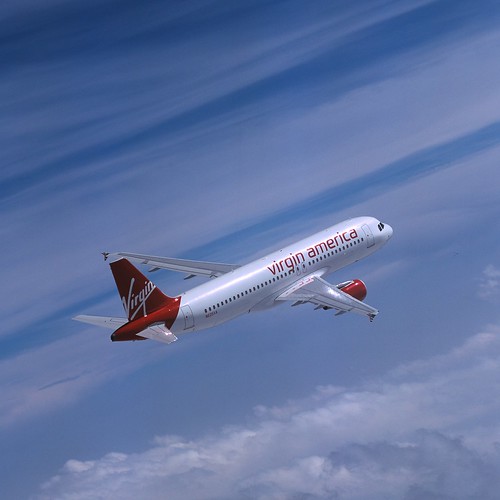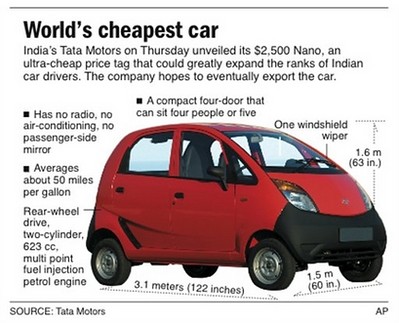(Source: Transportation Research Board)

TRB News
TRB Webinar: Back to the Future: Do We Need Aviation Reregulation?
May 19, 2009
TRB will conduct a web briefing or “Webinar” on Tuesday, May 19, from 2:00 p.m. to 3:30 p.m. EDT that will explore the prospect of increased government involvement in the airline industry, given high energy costs and an industry-wide financial crisis. Participants must register at least 24 hours in advance of the start of the Webinar, space is limited, and there is a fee for non-TRB Sponsor employees. [More]
TRB Webinar: Animal-Vehicle Collisions
May 12, 2009
TRB will conduct a web briefing or “Webinar” on Tuesday, May 12, 2009, from 2:00 p.m. to 3:30 p.m. EDT that will examine efforts to design and implement mitigation techniques to prevent animal-vehicle collisions. Participants must register at least 24 hours in advance of the start of the Webinar, space is limited, and there is a fee for non-TRB Sponsor employees. [More]
TRB Webinar: Design and Production of High-Reclaimed Asphalt Pavement Mixes
May 7, 2009
TRB will conduct a web briefing or “Webinar” on Thursday, May 7, 2009, from 2:00 p.m. to 3:30 p.m. EDT that will explore the research and best practices for the processing, design, and production of high-reclaimed asphalt pavement mixes. Participants must register at least 24 hours in advance of the start of the Webinar, space is limited, and there is a fee for non-TRB Sponsor employees. [More]
TRB Webinar: Design and Production of High-Reclaimed Asphalt Pavement Mixes
May 7, 2009
TRB will conduct a web briefing or “Webinar” on Thursday, May 7, 2009, from 2:00 p.m. to 3:30 p.m. EDT that will explore the research and best practices for the processing, design, and production of high-reclaimed asphalt pavement mixes. Participants must register at least 24 hours in advance of the start of the Webinar, space is limited, and there is a fee for non-TRB Sponsor employees. [More]
TRB Webinar: Performance-Based HMA Construction Specification
TRB will conduct a web briefing or “Webinar” on Monday, April 27, 2009, from 2:00 p.m. to 3:30 p.m. EDT that will examine the results of TRB’s National Cooperative Highway Research Program (NCHRP) project to develop performance-related specifications for hot-mix asphalt (HMA). During this session, presenters will demonstrate the Quality-Related Specification Software , which is based on the Mechanistic-Empirical Pavement Design Guide. This software provides engineers with the ability to compare the performance of an as-designed and as-built HMA pavement and calculates pay factors from the differences in performance. Participants must register at least 24 hours in advance of the start of the Webinar, space is limited, and there is a fee for non-TRB Sponsor employees. [More]
Eighth International Conference on the Bearing Capacity of Roads, Railways, and Airfields (BCR2A)
Champaign, Illinois
TRB is cosponsoring the Eighth International Conference on the Bearing Capacity of Roads, Railways, and Airfields (BCR2A’09) on June 29-July 2, 2009, in Champaign, Illinois. The conference is designed to explore issues pertaining to the bearing capacity and mechanistic-based design of highway and airfield pavements and railroad track structures. [More]
Recently Released TRB Publications
SHRP 2 Project Brief: DOT-Utility Coordination: Understanding Key Aspects of the Problem and Opportunities for Improvement
TRB’s second Strategic Highway Research Program (SHRP 2) has released a project brief that summarizes SHRP 2 Renewal project R15, which explored strategies designed to resolve issues that departments of transportation and utility companies face when working together. The project developed a plan to test and evaluate strategies designed to eliminate or mitigate utility asset relocation delays and overcome institutional barriers for the implementation of these strategies. [More]
SHRP 2 Project Brief: Encouraging Innovation in Locating and Characterizing Underground Utilities
TRB’s second Strategic Highway Research Program (SHRP 2) has released a project brief that summarizes SHRP 2 Renewal project R01, which explored ways to encourage innovation in the location and characterization of underground utilities, and identified areas that have the highest potential for innovation and improvement. The project also developed a research and development plan to advance promising technologies. [More]
On Being a Scientist: A Guide to Responsible Conduct in Research
The National Research Council has released the third edition of a report that describes the ethical foundations of scientific practices, and describes some of the personal and professional issues that researches encounter in their work. TRB is a division of the National Academies, which include the National Academy of Sciences, National Academy of Engineering, Institute of Medicine, and National Research Council. [More]
Joint Workshop on Abutment Scour: Present Knowledge and Future Needs – June 2008
TRB’s National Cooperative Highway Research Program (NCHRP) Research Results Digest 334: Joint Workshop on Abutment Scour: Present Knowledge and Future Needs – June 2008 explores the state of knowledge on bridge abutment scour. [More]
Pre-Overlay Treatment of Existing Pavements
TRB’s National Cooperative Highway Research Program (NCHRP) Synthesis 388: Pre-Overlay Treatment of Existing Pavements explores current pre-overlay treatment practices of state departments of transportation for both hot-mix asphalt and portland cement concrete pavement structures. The report is designed to help pavement management and pavement design groups in their selection of pre-overlay treatments. [More]
Federal Research News
Transportation Conformity Highlights: March 2009
The U.S. Federal Highway Administration has released the latest issue of its Transportation Conformity Highlights newsletter. The monthly newsletter is designed to keep conformity stakeholders up to date on issues related to transportation conformity. [More]
Review of Coast Guard’s Vessel Tracking Systems
The U.S. Government Accountability Office has released a report that examines the extent to which the Coast Guard tracks vessels at sea and can use these systems to track vessels that may pose security threats. [More]
Vision for High-Speed Rail in America
The Federal Railroad Administration has released a report that explores the U.S. Department of Transportation’s strategic plan for high-speed rail. [More]
Evaluation of the Focused Approach to Pedestrian Safety Program
The Federal Highway Administration (FHWA) has released a report that examines the pedestrian component of the FHWA’s Focused Approach to Safety Program. [More]
Not-in-Traffic Surveillance 2007 – Highlights
The U.S. Federal Highway Administration (FHWA) has released a traffic safety facts statistical summary that explores the Not-in-Traffic Surveillance (NiTS) system. The NiTS system is designed to provide details regarding fatalities and injuries that occur in non-traffic crashes and in non-crash incidents. [More]
Technologies That Complement Congestion Pricing – A Primer
The U.S. Federal Highway Administration has released a report that explores ways that technology can be used for congestion pricing by supporting the traveler’s decision to change travel time, travel mode, and travel route. [More]
Wildlife-Vehicle Collision Reduction Study: Best Practices Manual
The U.S. Federal Highway Administration (FHWA) has released a report that examines the causes and impacts of wildlife-vehicle collisions and identifies solutions to this safety problem. [More]
LTPP Manual for Profile Measurements and Processing
The U.S. Federal Highway Administration (FHWA) has released a report that explores operational procedures and data collection and processing methods for the Long-Term Pavement Performance (LTPP) Program. [More]
State Research News
A Functionally Optimized Hot-Mix Asphalt Wearing Course: Part I: Preliminary Results
The Virginia Transportation Research Council, a partnership of the Virginia Department of Transportation and the University of Virginia, has released a report that examines the design, production, placement, and early life performance of a new generation open-graded surface course for use in Virginia. [More]
University Research News
Concrete Pavement Overlays and Failure Mechanisms
The Center for Transportation Research at the University of Texas, Austin, has released a report that explores asphalt concrete overlay and bonded concrete overlay projects, and examines a life-cycle cost analysis for future overlay projects. [More]
An Ambit-Based Activity Model for Evaluating Greenhouse Gas Emission Reduction Policies
The Mineta Transportation Institute has released a report that examines greenhouse gas emission reduction policies that are being considered in the transportation sector in the wake of more stringent emission reduction targets envisaged in a post-Kyoto international climate treaty. [More]
Creating an Educational Network in California to Assess and Address Its Future Transportation Education Challenges
The Mineta Transportation Institute has released a report that explores future transportation scenarios in California and examines various policy responses addressing these scenarios. [More]
Go! – April-May 2009
The Center for Transportation Research and Education at Iowa State University has released the latest issue of Go! magazine. Go! is an online magazine for teens that explores the world of transportation and careers they can find there. [More]
International Research News
An Examination of the Monetized Benefit of Proposed Changes to Type Approved Noise
Limits for Tires
The U.K. Department of Transport has released a report that examines the monetized benefits of limit values for tire noise, which contributed to a proposed European Commission Regulation for general vehicle safety. [More]
Impact Assessment of EU Regulation to Reduce Carbon Dioxide Emissions from New Passenger Cars
The U.K. Department of Transport has released a report that explores ways to improve new car fuel efficiency standards, as related to a proposed European Union Regulation on car carbon dioxide emissions. [More]
Valuing the Health Benefits of Active Transport Modes
Land Transport New Zealand has released a report that explores the per-kilometer value for the health benefits of active transport modes, such as walking and cycling. [More]
Long-Term Dust Suppression Using the Otta Seal Technique
Land Transport New Zealand has released a report that examines the use of a simplified version of the Otta seal as a method for minimizing dust emissions from gravel roads in New Zealand. [More]
In the Know
Travel Training for Student Success: The Route to Achieving Post-Secondary Student Outcomes
Easter Seals Project ACTION has released a primer for school administrators interested in learning how high schools across the country connect students with disabilities to travel training services. [More]
IIHS Status Report: Vol. 44 No. 4
The Insurance Institute for Highway Safety (IIHS) has released the latest issue of its Status Report magazine. This issue explores the results of IIHS’ study evaluating car size and weight, and the impact that these variables have in protecting people during crashes. [More]
Evaluating Options for U.S. Greenhouse-Gas Mitigation Using Multiple Criteria
The RAND Corporation has released a report that examines previous policy attempts to implement a carbon tax or cap-and-trade program. The report outlines criteria that evaluate these previous policy efforts, and suggests ways to better inform future decisions aimed at reducing greenhouse gas emissions. [More]
Moving into North Dakota’s Future: Meeting the State’s Need for Safe and Efficient Mobility
TRIP has released a report that examines North Dakota’s financial capacity to modernize its surface transportation system. TRIP is a nonprofit organization that promotes transportation policies that aim to relieve traffic congestion, improve road and bridge conditions, improve air quality, make highway travel safer, and enhance economic productivity. [More]
Cycling-Inclusive Policy Development: A Handbook
The German Technical Cooperation’s (GTZ’s) Sustainable Urban Transport Project (SUTP) has released a report that examines how to develop cycling-friendly policies and facilities. The SUTP is designed to help developing world cities achieve their sustainable transport goals, through the dissemination of information about international experience and targeted work with particular cities. [More]
Reclaiming City Streets for People: Chaos or Quality of Life?
The Active Living Resource Center has released a report that explores ways to plan public spaces in order to eliminate road traffic for pedestrians. [More]
Asia on the Move: Energy-Efficient and Inclusive Transport
The Asia Development Bank has posted presentations from its Transport Forum on sustainable transport development, which was held on September 9-12, 2008, in Manila, Philippines. [More]
Arizona‘s New Frontier: Moving Our Transportation System into the 21st Century
U.S. PIRG, the federation of state Public Interest Research Groups (PIRGs), has released a report that explores ways to invest in and expand public transport systems in Arizona. [More]





![Spain's system of 218-mile-an-hour bullet trains, the AVE[mdash ]meaning 'bird' in Spanish[mdash ]has increased mobility for many residents, though critics say it has come at the expense of less-glamorous forms of transportation.](http://s.wsj.net/public/resources/images/NA-AX208_FASTRA_G_20090419183055.jpg)


